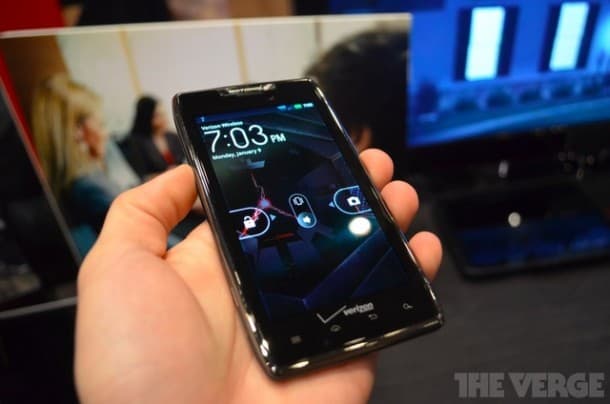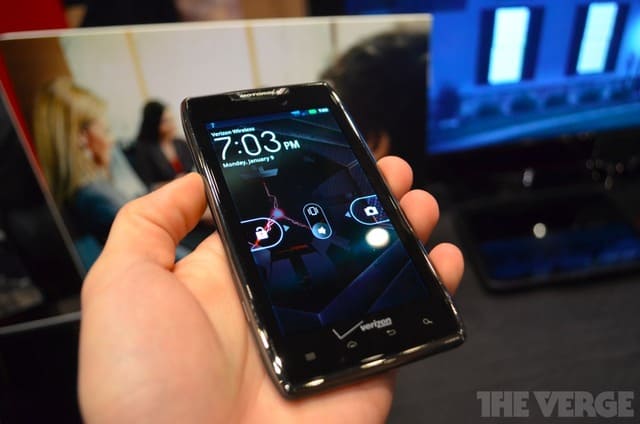
Tomorrow, the beefed up Droid RAZR Maxx hits Verizon stores ($299, two-year contract). I’ll just come out and say it: Maxx is the best Android phone on the market.
Maxx (and the original RAZR) is beautifully designed, includes all the latest whiz-bang (though Beats would’ve been sweet), and – best of all – it has real, honest-to-goodness battery life.
What about Galaxy Nexus and ICS?!

Sure, Samsung’s Nexus is a decent smartphone. Not blow away. Not game changing. By any stretch of the imagination (Review: Samsung Galaxy Nexus – A refined, but not perfect, Android).
After the honeymoon phase wears off, I suspect many Nexus pioneers will be pining for the quad-cores that’ll appear right around the corner. Plus, the battery life is abysmal as many have reported; though it seems equal numbers rave about it (really!). Here’s what I wrote on the conflicting situation:
Googling “battery life nexus” will get you pages worth of two types of articles: (1) those that tell you how to get a full day out of your Nexus (popular suggestions across the web: shut off wi-fi, turn off bluetooth, kill all the background apps, turn off the phone, etc.); and (2) those that are ranting, raving and crying in their beer (like me, as much as I’d prefer not to).
Getting ICS first is a tempting proposition, granted. Some how, some way I was able to park my ambitions at the door, and hang on to trusty OG Droid just a few months longer (and, man, updating apps on that thing is as slow as can be). At the end of the day Gingerbread (Android 2.3) still does everything ICS can, albeit without the flare and (Mr) Roboto aesthetics. I can still place widgets to my heart’s content. Gmail works just fine. As does News360, Yelp, Facebook, Twitter, Calendar, Google Music (awesome), Nav, etc. I do want ICS (and I’m anxious to get the update for my Samsung Galaxy Tab 10.1). But in the end I decided to pass on the Nexus, and wait for something better to come along.
Two things are likely to happen next month in the Android smartphone market.
1. Quad-cores finally arrive.
Here they come: HTC Edge, Samsung Galaxy S III, LG X3…
I’m not normally one for speeds and feeds (see iPad vs. Honeycomb Android tablets for why user experience trumps all), but in the case of these nextgen Android phones I’m bullish on NVIDIA’s Tegra 3 which the company claims is up to 5x faster. Here’s why: I think we’re on the verge of a massive influx of wildly vivid, immersive, real-time, video-centric apps. Ones we’ve never imagined. They’ll blow our minds. And they’ll require lots of processing power. Think your dual-core Android is fast enough now? Check back with me in 12 months or so; I’m guessing you’ll be begging for more CPU (and possibly a different election outcome…).
2. Battery life is finally tackled by vendors.
Credit Motorola for starting the trend. I expect to see beefier batteries and emphasis on power saving in the coming months. Features are great. But most of us need to get through a workday without doing the charger dance.
Android Dilemma: Droid RAZR Maxx, Galaxy Nexus or Quad-Core?
If you’re in the market for an Android who’d you rather?
For those who can’t wait I’d again suggest the Motorola RAZR Maxx. It will get ICS soon enough, and you get most of the beautiful design we saw in the original RAZR (though you won’t be able to lay claim to owning the thinnest smartphone on the market). Those that don’t appreciate the Nexus softkeys will like that RAZR has the classic Android capacitive buttons many know and love.
For those with patience, possibly one of the thousands like me still waiting to upgrade their OG Droid, I’d say wait to see what’s around the corner at Mobile World Congress in February. Sure there’s always something new around the corner. However, processing jumps – such as the quad-cores – only come every 12 months, give or take. My suggestion: ride that wave.


